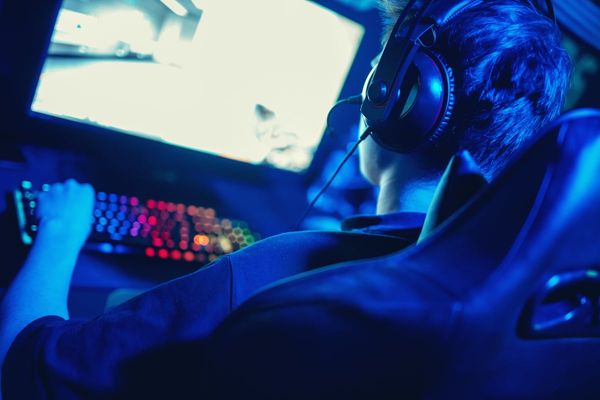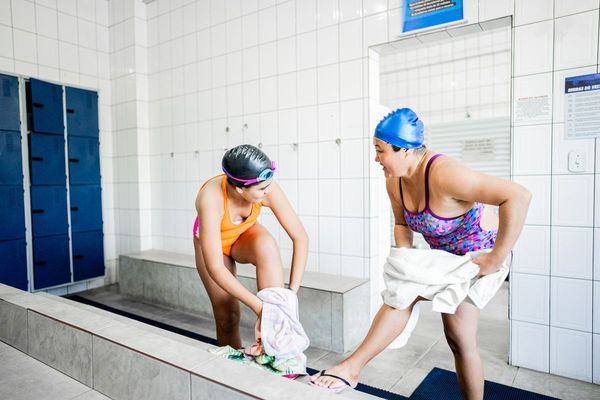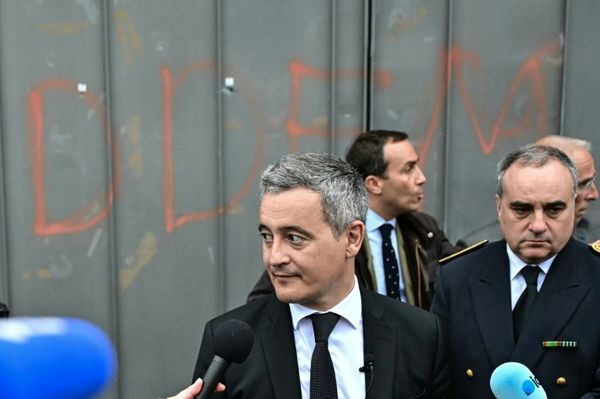This story of the Nurburgring closing its halls to motorcyclists feels reminiscent of another story I wrote last year. A story about knowing the risks we, as motorcyclists, take when we head to the Isle of Man TT to conquer the infamous mountain course. I mean, the owners of the Nurburgring cited "safety concerns," which felt eerily similar to every do-gooder writer who decries the TT each and every year.
And so, I felt this welling anger of "I've already written about this. We know the dangers. We all sign waivers when we enter the Green Hell's confines. Quit being nannies!" In a world so coddled by safety, I do believe that we need a little more freedom to take risks to better understand the human experience.
But then I started thinking about this a little more. I let my anger subside and really read into both the track, the owners, and how it all works. In fact, I started looking at the economics of the Nurburgring. And I tried to parse through the statement that the track's owners laid out, seeing if I could glean something my colleagues around the world had missed.
Folks, I don't think this decision is about safety. I don't even think it's about insurance liability. Despite the statement put out, I think it's about cold-hard cash.
Let me explain.
First off, motorcycles aren't completely banned from the track, though there are some seriously steep barriers to entry now. Going forward, if you want to ride the track, you'll be limited to specific motorcycle-only days—of which there'll only be a few—and all of them will be guided by trained motorcycle teachers. That means you'll have to pay the track or school putting on that specific ride day a small fortune, as every motorcycle school I've ever done ain't cheap. You do get what you pay for, but it doesn't negate the economics.
According to the Nurburgring's statement, "The restructuring plan provides for different options for the Nordschleife and the Grand Prix circuit. In the future, motorcyclists will only be able to experience the 21-kilometre Nordschleife under the supervision of trained guides during training sessions and courses. Four full-day sessions will be offered for motorcyclists in 2025. The Motorrad Action Team (July 30-31) and ADAC Doc-Scholl Driver Training (August 13-14) are each organizing full-day training formats for two-wheelers. The subdivision into different groups makes the offer suitable for beginners as well as for very experienced Nordschleife connoisseurs."
Tourist rides, the most popular option where riders could turn up on nearly any given day and carve the track's insane corners alongside cars, however, are completely out.
"The safety of all participants is our top priority. We have taken a very close look at the situation regarding the simultaneous participation of cars and motorcycles in tourist trips. The different driving dynamics can lead to misunderstandings between two- and four-wheelers. In this case, motorcyclists are particularly at risk because, unlike car drivers, they have no crumple zone. That is why we have decided to strictly separate cars and motorcyclists in the future and to restructure the offer for bikers so that they can enjoy the Nürburgring experience as safely as possible," said Nürburgring Managing Director Ingo Böder.
But I'm not buying it.
According to prior reporting by our friends at Road & Track, during Touristenfahrten weekday sessions, "You might see 50-200 individual cars pass through the toll gate in a session. On a weekend, it could be 500-1,000. The busiest weekends may see around 2,000, with up to 250 cars on track at any given time." As for accidents, R&T reached out to German police, as the track is considered a toll road during those sessions and is governed as a public highway, who stated "In 2018, the Polizei were made aware of 90 accidents, with one fatality, 15 serious injuries, and 18 minor injuries; in 2019, 84 accidents were reported, with 18 serious injuries, 15 minor injuries, and no fatalities; 2020 had 67 reported accidents, with one fatality, 10 serious injuries, and 11 minor injuries; in 2021, there were 76 reported accidents, with one fatality, 28 serious injuries, and 13 minor injuries."
The police also said that not every accident is reported to them, especially those only affecting property damage. One motorcyclist was killed in 2022, however.
Yet, based on those numbers, the idea of it being a safety issue doesn't really add up. Far more people enjoy the Nurburgring's Touristenfahrten and get through safely than those who don't. In fact, it seems as though, despite its Green Hell infamy and prior penchant for death and severly burning F1 racer Niki Lauda, it's a safer place to go and drive quickly than some other tracks and track day operations. Likewise, unlike in the United States where motorcycle licensing is essentially the Wild West—you can take the test on a 125cc scooter and then go buy a Suzuki GSX-R1000 on the same day—European motorcycle licensing is far more stringent. And you needed full gear to go onto the track, so again, it's a pretty safe place to be.
What does happen, however, is that the track has to close down sessions for accidents and rescues, and more often than not, when a motorcyclist crashes, even if it's infrequent, it's a bigger deal than say a car sliding into one of the track's barriers. That means the track can't collect revenue during that time they otherwise could.
Based on reporting at CarBuzz, crashes not only cost the driver/riders money, but also the track. "Roadworks setup: $238 - this involves condoning off the area and deploying a roadworks team to commence repairs," says the outlet, adding, "Removal of damaged guardrail: $28 per meter (3.3 feet); Supply and installation of new guardrail: $69 per meter; Safety car deployment: $69 per half-hour; Wages for Nurburgring staff: $58 per half-hour; Complete Nurburgring closure: $1,500 per hour."
And given that motorcycle accidents often require ambulances and further closures, all of that adds up to a lot of lost money when the Nurburgring charges around $35-$40 a session. Add that car rides outnumber motorcycle rides, and you start to get an idea of what is likely going on behind the scenes.
I've reached out to the Nurburgring's officials for comment, as well as asked them a host of questions on the new motorcycle regulations. Hopefully, when I hear back, I'll be able to update this story. However, at present, motorcyclists won't be permitted to enjoy the Touristenfahrten sessions moving forward. The track has said that riders who have a season pass or credit balances "can continue to use these for the offer on the Grand Prix circuit" rides during motorcycle-only days or get a refund from the track.
But honestly, I don't see motorcycles returning to the Nurburgring public sessions in the future and that's a sad day indeed.







